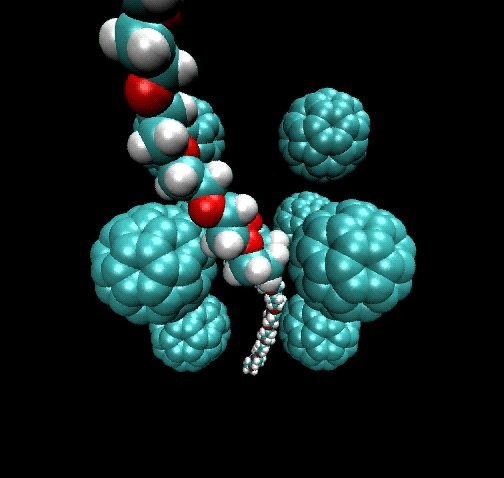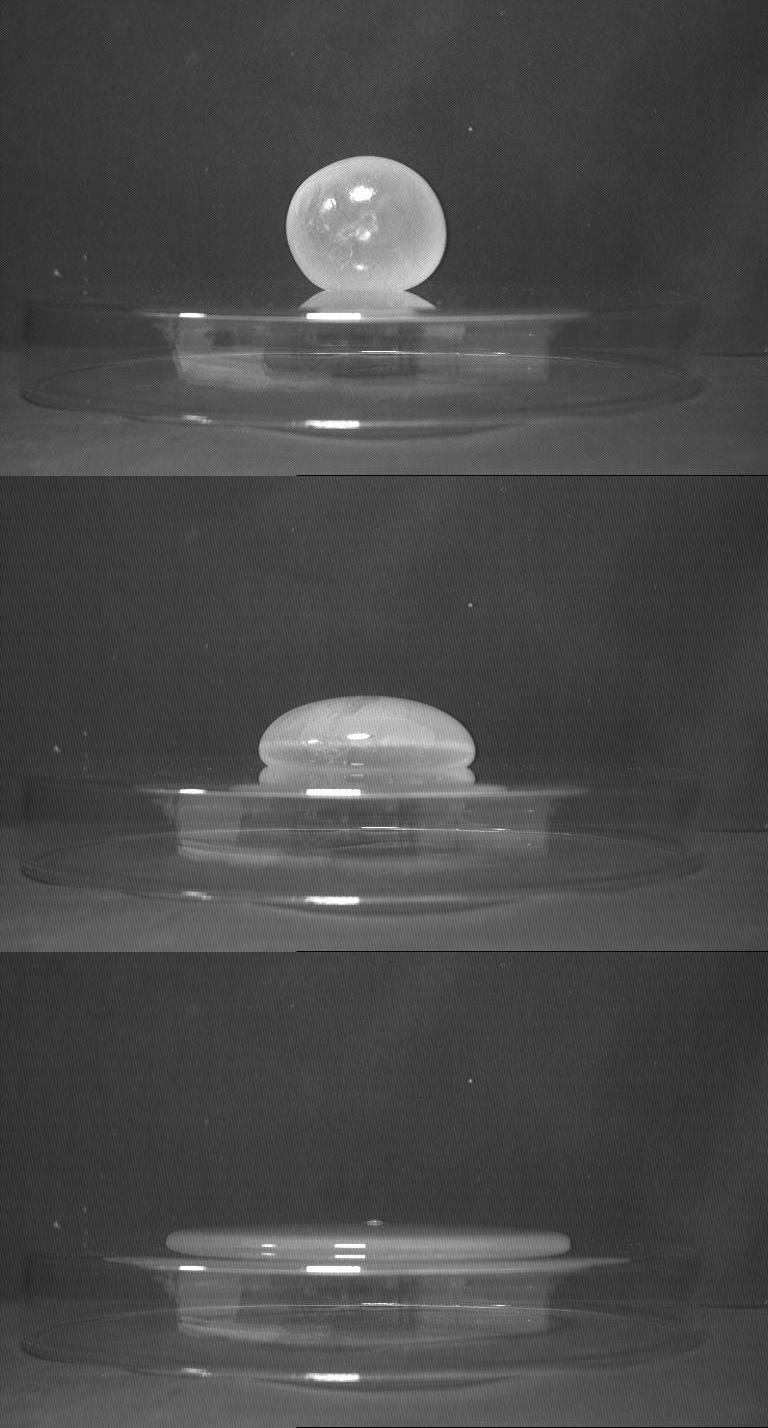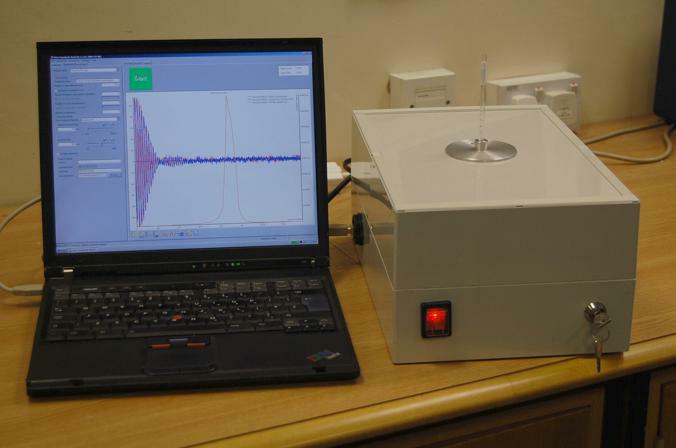Final Year UG Project Options 2009-10

Our research centres on the science of very large molecules up to 108 in molecular weight. If one of these molecules were stretched fully it would be roughly 0.5mm long. In reality this would hardly ever happen and these very large molecules adopt a rich variety of conformations. It is this ability that accounts for many of their useful properties such as elasticity and the ability to act as an adhesive. The use of macromolecules in colloid science is also one of the main interests of our group and this very broad area of science satisfies both fundamental scientific curiosity and the opportunity to work on real systems of economic, environmental and medical relevance. The methods we use in this work are varied but focus on NMR, scattering (X-ray, neutron, light), synthesis and computer modelling.
The areas below are all suitable as potential undergraduate projects - for more information, contact us by email, look at our website or wander down to the labs in S010 and talk to some of the people in the group about what we do.
Email: Terence Cosgrove or Stuart Prescott
New polymer architectures.
Triblock
copolymers such as "Pluronics", poly(ethylene
oxide)-poly(propylene oxide)-poly(ethylene oxide), have applications
in controlled drug release and drug solubilisation. Pluronics have
been widely studied; however, their properties are temperature and
concentration sensitive which limits their potential for drug
delivery. Projects in this area could involve the synthesis of new
Pluronic adducts by grafting them to biological or non-toxic polymers
such as natural rubber and poly(isoprene). The synthesis of nitro-
and amino-functionalised pluronics is also an area for exploration.
 Characterisation of the products would use a variety of NMR, colloid
and polymer techniques. For further information contact Shirin Alexander.
Characterisation of the products would use a variety of NMR, colloid
and polymer techniques. For further information contact Shirin Alexander.
Making surface templates.
Much of the work in the group involves studying polymers at interfaces. When adsorption takes place, polymers change their structure and properties. Of particular interest have been the interactions between polymers such as poly(ethylene oxide) and nanoparticles such as silicon dioxide. Current work is looking at both strong and weak polyelectrolytes and also the interactions between polymers, surfactants and nanoparticles in three-component systems. Possible projects in this area include studying polymers in pores, grafting and adsorption of molecules of biological significance onto surfaces, and using temperature or pH responsive stabilisers with magnetic nanoparticles as MRI contrast agents. We have also been undertaking molecular dynamics simulations of particle-polymer interactions so both experimental and molecular dynamics studies are available. For further information contact Beatrice Cattoz.

Functional siloxanes.
Siloxanes
have possibly the widest range of applications of a single polymeric
material, from lubricants and paints to cosmetics and biocompatible
medical implants. Their properties include high thermal and oxidative
stability, low chemical reactivity, low toxicity and low glass
transition temperatures. We have recently developed two different
types of modified poly(dimethylsiloxane) (PDMS) materials which have
a range of functionality that may change the chemical nature or
impart specific reactivity into the
polymer. One class of modified PDMS incorporates acrylate groups and
produces a material which is suitable for irradiation-induced
cross-linking. The cross-linking process changes the material from a
flowing, easy to manipulate liquid into an immobile, fixed elastomer.
Projects studying these materials would investigate the synthesis of
the 3-dimensional gel networks e.g.
characterising the gel-fraction and the rate of polymerisation.
Solvent extraction and NMR techniques will be the key to
understanding these materials. Alternative reactivity can induce
particulate bridging to form composite materials with properties far
removed from those of the starting materials. For further information contact Ben Cheesman.

A second class of modified PDMS combines PDMS and silicone-based nanoparticles into a "trickblock" or a dumb-bell such as the one pictured here. Viscosity measurements and various NMR techniques (high-resolution spectroscopy, relaxation, diffusion etc.) are typically used to characterise these products. For further information contact Sairoong Muangpil.
MicroNMR

NMR is a versatile method and part of our interest is in developing new NMR methods and in making miniature NMR spectrometers for measuring properties such as the surface areas of nanoparticles. Projects in this area involve preparing novel nanoparticle polymer gels and taking NMR measurements with prototypes of a shoe-box sized spectrometer. We have previously shown that our prototype spectrometer can measure the surface area of dispersed silicon dioxide nanoparticles. Future work could look at the measurement of surface areas for different nanoparticles, the effect of temperature on the measurements or the use of NMR to measure the oil-to-water ratio in emulsions or microemulsions. This is an exciting chance to develop a new instrument. For further information contact Stuart Prescott.
-
Modeling of wetting: a study of nanowetting at rough and heterogeneous surfaces. Cosgrove, Lundgren, Allan. Langmuir, 2007 23 1187-1194 (front cover of issue).
-
NMR solvent relaxation in studies of multicomponent polymer adsorption. Nelson, Cosgrove, Kozak. Langmuir, 2002 18(7) 2750-2755.
-
Complexation between a-cyclodextrin and poly(ethylene oxide) physically adsorbed on the surface of colloidal silica. Sabadini, Cosgrove, Taweepreda. Langmuir, 2003 19 4812-4816.
-
Monodisperse emulsions from a microfluidic device, characterised by diffusion NMR. Woodward, Cosgrove, Shaw, Jenkins. Soft Matter, 2007 3 627-633.
-
Adsorption studies of different end-functionalized linear poly(dimethylsiloxane). Patel, Cosgrove, Semlyen, Webster, Schuetjens. Colloids Surf., A, 1994 87 15-24.